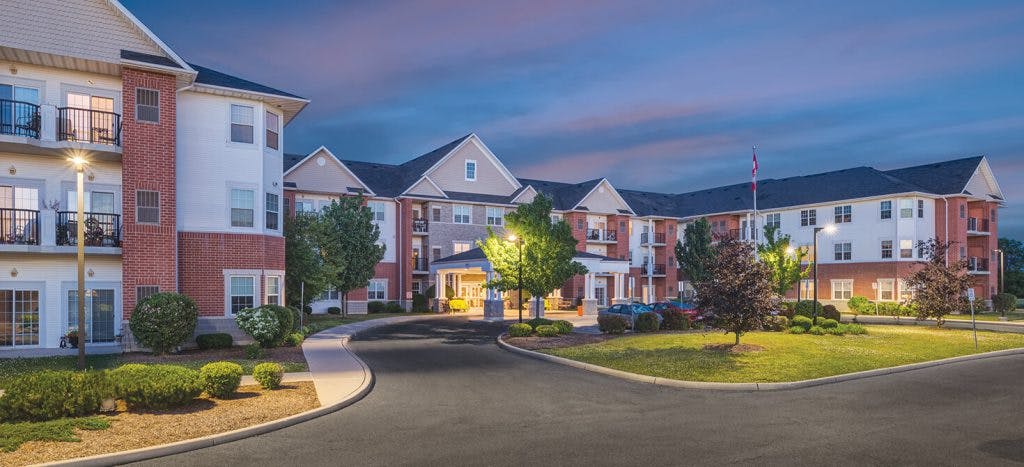What to Look For in a Retirement Community

What to look for in a retirement community? It all starts with affordable prices and the right level of care and service. Below are a few important features to look for in a retirement community. There is also staff that puts the interests of residents first. In addition, consider security measures, levels of care, and the level of privacy and security you are comfortable with.
An affordable retirement community
Finding an affordable retirement community may be challenging, especially if you want a larger, single-family home. However, there are several factors to consider when selecting an affordable community. Most of these communities are made of manufactured homes, which can be much less expensive than a site-built home. Also, some land-leased communities allow residents to purchase their homes without paying for the lot. Instead, residents may have to pay a lease fee every month.
In addition to affordable housing, many communities are green and environmentally friendly. In addition to bringing green design to the neighborhood, many new affordable housing developments are integrating environmental, social, and health-related practices. For tips, check out 55 Communities in Florida.
Staff that puts residents' interests first
Whether you're looking for a place to live for the rest of your life or the rest of your days, you should look for a retirement community with staff that puts residents' interests first. This means planning activities and events that keep residents engaged, promoting shared interests, and partnering with local organizations. The staff should also be proactive in solving conflicts and ensuring that residents are treated with dignity and respect.
Residents can reshape the culture and social environment of a retirement community. As a manager, you ensure that the retirement community maintains a culture of inclusion and opportunity. Our study revealed that social cliques and unwritten social rules were common in both types of senior housing, although these were not identified as sources of dissatisfaction or stigma. Moreover, the presence of staff turnover was also a frequent concern.
Security measures
If you are considering moving to a retirement community, security measures are one of the first things you should consider. While you may not require all of these measures, they are important for keeping residents and their belongings safe. Having proper screening procedures in place will prevent unauthorized visitors, and you will also be able to identify service workers, vendors, and contractors. Some retirement communities are gated, with checkpoints open 24 hours a day.
Regular checks and testing of residents are important for controlling the spread of infections. It is also necessary to have protocols to treat sick residents while keeping the community safe. Simple procedures like disinfection will prevent the spread of infections and help staff members serve residents in the best way possible. When ensuring the safety of the residents, it is also important to ensure that there are no confined spaces or hallways. In an accident, a retirement community should have a plan to handle it.
Levels of care
There are different levels of care available in retirement communities. The lower level is appropriate for residents who require occasional support and assistance but do not need constant supervision or care. They may need assistance with activities of daily living, such as bathing and dressing, or with tasks that require frequent supervision or cueing. Residents with this level may also be experiencing memory loss or require a higher level of care due to an increased risk of falling.
Security measures in a retirement community
A secure retirement community has several important security features to ensure resident safety. Handrails are an important fall prevention feature. Secure handrails should be installed on both sides of stairs and public corridors. Additionally, rest areas should be available for residents who feel fatigued. In addition, grab bars should be installed in communal areas, including bathrooms, to prevent residents from falling on potentially unstable fixtures. These grab bars can be installed as towel bars or folded down for greater flexibility in placement.
Senior communities should have security cameras installed around the property. These can help deter criminals and assist with investigations. Fire and disaster safety measures are also important to consider. Professional staff is trained to help prevent resident falls and ensure their safety. Also, in addition to surveillance cameras, some retirement communities provide professional staff to supervise social interactions and arrange events. This will help prevent wandering. Further, residents of memory care communities can expect additional security measures.
Round-the-clock staff
While seeking 24-hour staffing in a retirement community may be tempting, such facilities are often not as beneficial to residents as they seem. While the staff at a care home will be available 24 hours a day, a retirement community should have a higher staff-to-resident ratio. The services provided by Around The Clock include non-medical assistance with activities of daily living, assistance with ADLs, and medication management. Aside from assisting, staff members rotate through the residents more frequently to provide a personalized care plan for each resident. In addition to assisting, staff members respect residents' privacy and dignity.
While retirement is supposed to be a time for rest and relaxation, a high-quality retirement community must offer round-the-clock assistance. The amenities offered by these communities vary greatly, but luxury communities typically provide maids, nursing staff, and grocery delivery. In addition, the upscale facilities are designed to cater to the needs of residents of all levels. For example, a community in a high-end luxury area is likely to provide round-the-clock care.
